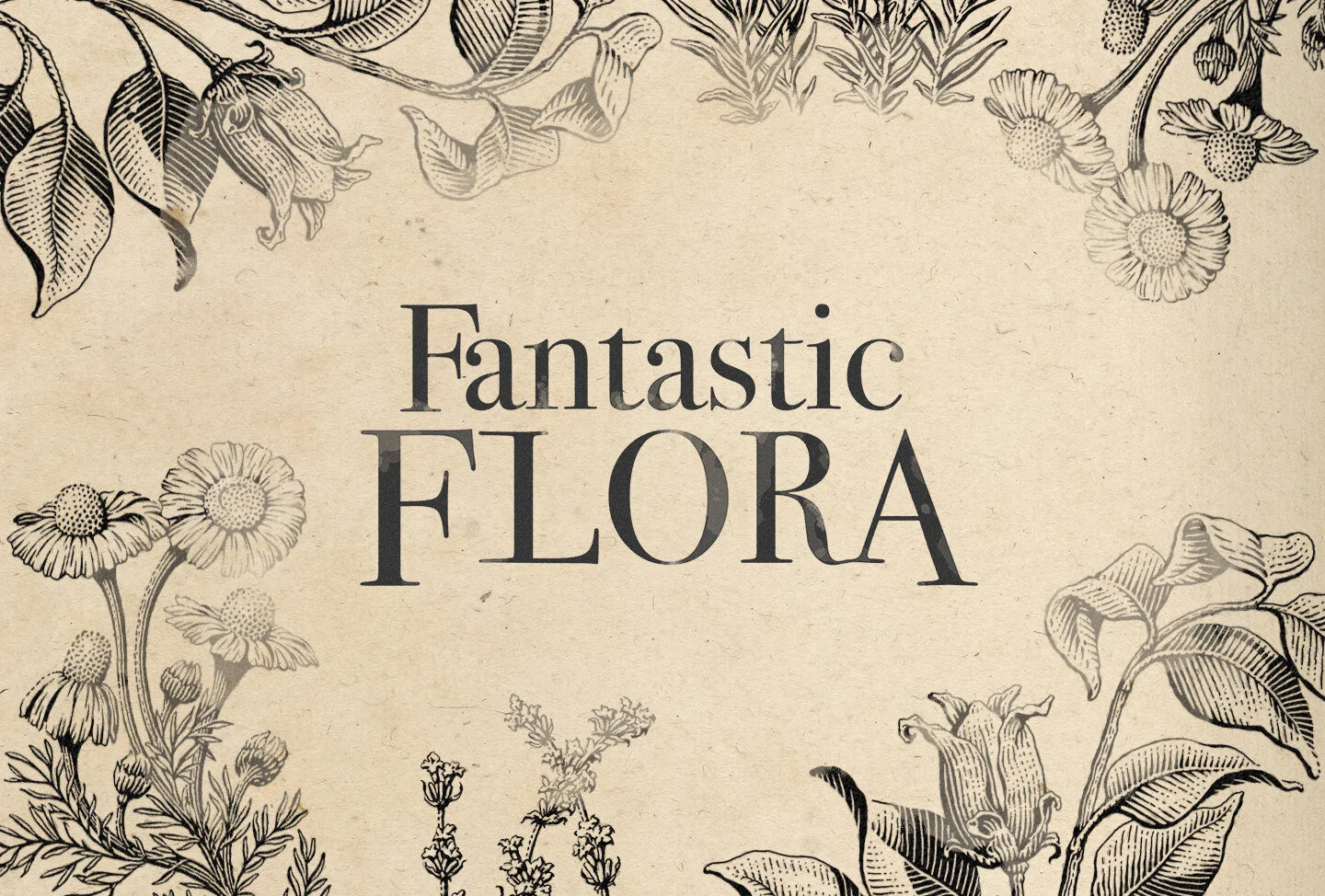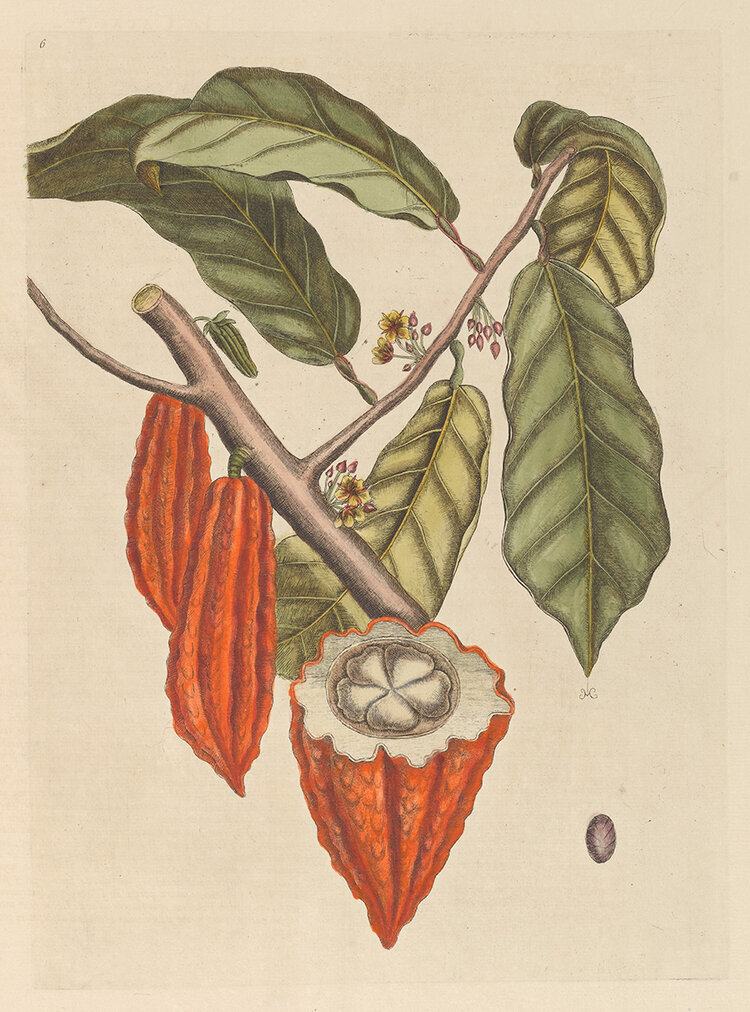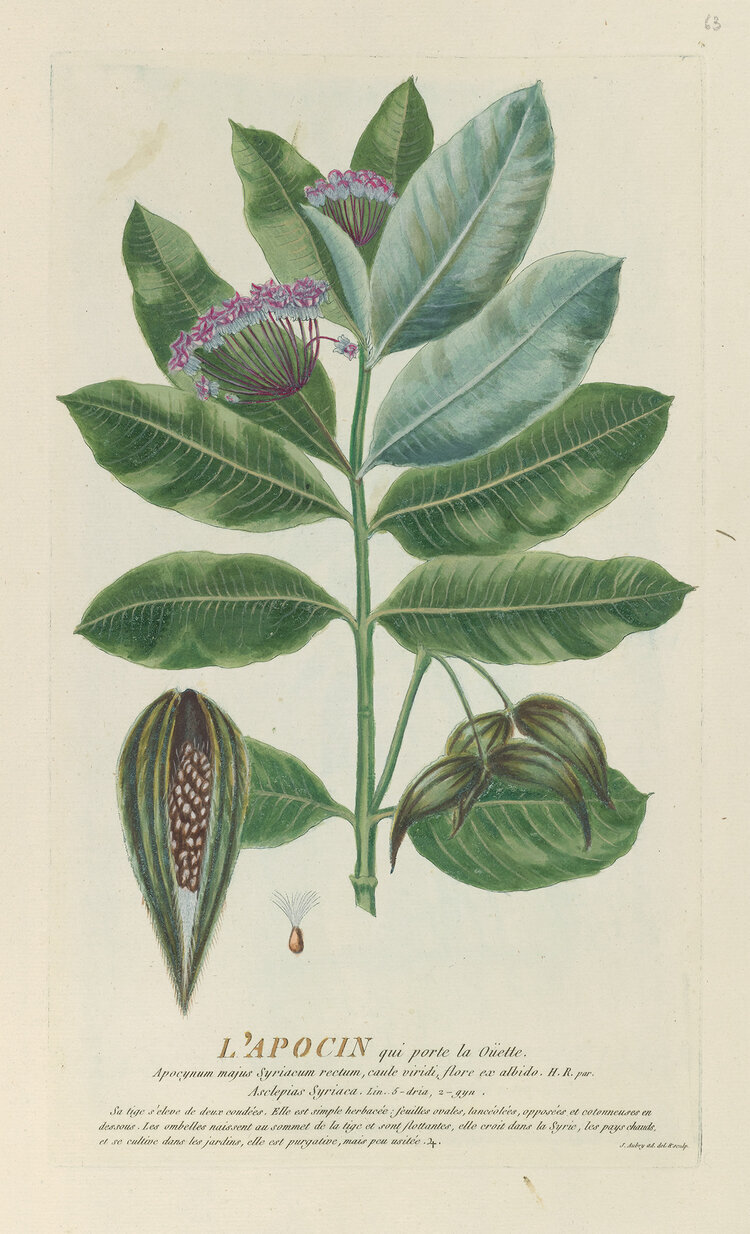Introducing Fantastic Flora
OSGF
Plants are much more than décor for your desk, or greenery for your lawn. They are diverse, living beings that serve countless critical roles within our world.
Humans rely on plants for everything from food, to medicine, to providing us with beauty and creative inspiration, but their value far exceeds these uses. Plants are crucial to all life on earth, and understanding their role in complex natural systems – and their amazing ability to adapt and survive in a changing world - can help us provide a better future for our planet.
Sparking public dialogue about plants and the environment is a major part of the Oak Spring Garden Foundation’s mission, and we are excited to announce the launch of a free, digital educational exhibit that features the fascinating world of plants. Fantastic Flora blends art, culture, history, and science to explore the role of plants in both human history and the natural world. The exhibit includes sections on fire-adapted plants, plants in history and culture, and plant mobility, among other themes. It is illustrated with materials from our extensive, plant-focused library of rare books, and draws from the knowledge of the world-renown botanists we partner with.
Beginning this Friday, we will release a new digital Fantastic Flora poster every week as a way to share stories of the world’s incredible plants, leading up to a launch of a full digital exhibit, which includes educational activities designed for students in grades 6-8, in early 2021. Starting then, the high-resolution, print-ready posters will be available for free download for use in classrooms, libraries, botanic gardens, and other educational institutions around the world.
Follow us on Facebook, Instagram, and Twitter to see a new Fantastic Flora poster every week (released on “Flora” Fridays!) and visit our Fantastic Flora Online webpage to follow along as the exhibit grows. If you have any questions about using the exhibit for your institution or organization, please write to us from our Contact Us page.
Scroll down to learn about just a few of the dozens of fantastic plants that will be featured in the exhibit over the coming months.
Cacao Tree (Theobroma cacao)
Humans have held complex relationships with plants for millennia, and a plant with one of the farthest-reaching roles in human history also provides the key ingredient in your Hershey Bar.
Mark Catesby (English, 1683-1749). “Cacao arbor.” The Natural History of Carolina, Florida, and the Bahama Islands. London, England, 1731-1743
Chocolate (made from ground cocoa, which is what you get after fermenting and roasting the seeds of the cacao tree) has held special significance to cultures around the world for thousands of years. It was originally used in a bitter, water-based drink by the Aztec, Maya, and other peoples living in what is now Central America and Mexico, who drank the beverage at marriages and other important rituals and ceremonies. The cacao tree’s Latin species name “Theobroma” means “food of the gods,” while “cacao” mirrors an Aztec word, “Xocolatl,” meaning “bitter” and “water.”
After Spanish conquistadors invaded the continent and came across the cacao tree, they added their own spin to the native people’s drink (i.e., lots of sugar). After the Spanish brought chocolate to Western Europe, it morphed into the creamy confection we know today.
Though quite bitter without the additional ingredients most of us are accustomed to, cacao seeds contain many health-boosting and feel-good properties, including antioxidants and amounts of tryptophan and phenylethylamine, chemicals which are associated with feelings of happiness and falling in love – likely part of the reason chocolate has maintained worldwide popularity for so long.
Old Man Banksia (Banksia serrata)
Sir Joseph Banks (English, 1743-1820). “Isostylis Serrata [Banksia serrata]. ”Banks’ Florilegium. London, England, 1980-1990.
You wouldn’t think that fire and plants would mix well (and in most cases, you would be correct), but there are many plants that rely on fire to grow. Particularly in parts of the world where wildfires are seasonal, some plants rely on the heat and flames to break open their seed pods or to clear forests to provide greater nutrition and less competition from understory plants. Some species even have specialized organs that help them recover quickly after a fire.
Among many amazing fire-dependent plants is Old Man Banksia. Native to Australia, the seeds stored in the tough fruits of the tree’s canopy only open when exposed to flames. In the event that a fire doesn’t reach the plant, some Banksia fruits can even remain on the trees for decades waiting for flames. They also have a very thick bark that protects dormant buds, which will sprout into shoots following a fire.
As wildfires increase around the world due to climate change, studying the amazing abilities of these plants can help us better understand how the natural world can adapt to such drastic changes.
Sunflower (Helianthus annuus)
Elsie Margaret Stones (Australian, 1920-2018). Helianthus Annuus "Sunflower." London Borough of Richmond upon Thames, Royal Botanic Gardens, Kew, England, 1987.
We think of plants as being stationary, but they are constantly in motion – folding leaves, bending floral heads, and moving reproductive structures. Some plants’ movements are “bigger” than others, among them the Common Sunflower.
Not only do sunflowers resemble the sun, they follow it throughout the day: early in the plants development, the flower buds move in the morning to face the sun in the east, and as the sun moves across the sky, the plant shifts west. This type of movement is called heliotropism, which likely developed to help plants maximize photosynthesis, and occurs in many common flowers, including daisies, poppies, and marigolds.
Sacred Blue Lily (Nymphaea caerulea)
Robert Thornton (English, 1768-1837). “The Blue Egyptian Water-Lily.” New Illustration of the Sexual System of Carolus von Linnaeus. London, England, 1807.
Some plants are just plain strange-looking – and there’s an evolutionary reason behind every oddly-shaped leaf, petal, and seed. Plants adapt to survive in their habitats, and continue to do so even as their environments change due to human impact.
An example of a plant adapted perfectly to its environment is the Sacred Blue Lily. Native to north and central Africa, these lilies evolved to survive in water. Typical of water plants, the flowers of the sacred blue lily bloom above the surface, though its stems and roots are submerged. Internal air canals and cavities allow gases to move readily to the submerged parts of the plant, especially from the breathing pores on the upper leaf surfaces, through the stems, and to the roots.
The sacred blue lily – which once flourished in the Nile Delta - is widely represented in ancient Egyptian art, as a symbol of creation and rebirth. Unfortunately, the lovely plant has now all but disappeared from that area.
Milkweed (Asclepias syriaca)
Pierre Philippe Aylon (French, 1758?-1816). Image from Cours de Botanique, Pour Servir a l’Education Des Enfans. Paris, France, 1787-1788
In order to reproduce, many plants rely on relationships with pollinators: insects and animals that depend on nectar and pollen for their own survival, and disperse the pollen from the parent plant as they fly farther afield.
Although it provides food for over 450 species of insects, Common Milkweed is most famous for its relationship with the monarch butterfly. It is the only host plant for monarch caterpillars, and the reason is an interesting one: while milkweed contains toxins that many insects and animal species are unable to eat, monarchs possess an enzyme that makes them resistant to the milkweed’s toxins. Birds, however, can’t ingest these toxins, which lowers the monarch’s chance of becoming a snack. Thus, the butterflies disperse the milkweed’s pollen, and the milkweed greatly increases the butterflies’ chances of survival - a win-win situation for both species.


![Sir Joseph Banks (English, 1743-1820). “Isostylis Serrata [Banksia serrata]. ”Banks’ Florilegium. London, England, 1980-1990.](https://images.squarespace-cdn.com/content/v1/57d1b689e6f2e1faa4ced747/1591627233211-BMAEKOK3S1PRYA2572R6/Old-Man-Banksia.jpg)


